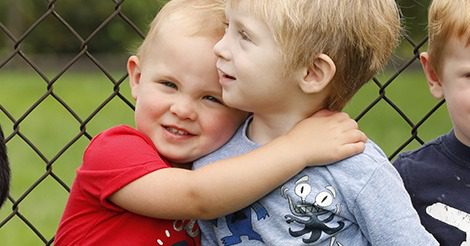 Conflict Resolution
Conflict Resolution
When children play together, there is bound to be conflict from time to time. Because of this, understanding how to resolve conflict and forgive others are essential social skills for children to learn to support positive peer relationships.
Unfortunately, many times adults think the act of forgiveness is just a platitude that one says, like ‘please,’ ‘thank you,’ and ‘excuse me.’ But forgiveness isn’t forcing your child to say or accept an apology. Forced apologizes only teach children to lie (as often times they aren’t sorry for what they did). Forgiveness is not something a person says, but something a person does as part of reconciliation.
The key to teaching your child conflict resolution and forgiveness is empathy. First, both persons involved in an argument need to listen to understand the other person’s feelings. After each child has had an opportunity to share how they feel, then they should discuss what they need to resolve the conflict and move forward together. Try the strategies below to help your child practice these important social-emotional skills.
Age-appropriate Adaptations:
- Two-year-olds—Younger children should first practice identifying the feelings they feel. When your child is calm, look at pictures of people showing different emotions. Help your child to name those emotions and point out the facial expressions connected with each emotion. It can also be fun to practice those facial expressions in a mirror. Then when your child is upset, help her to verbalize her feelings. For example, you could say, “I see your eyebrows are scrunched up, your arms are crossed, and your mouth is closed tightly. Are you feeling mad?” If you correctly guessed your child’s emotions, encourage her to declare her emotions out loud (i.e., “I am mad!”).
- Three-year-olds—When your child is in conflict, help her practice expressing her feelings by modeling for her how to say simple “I” statements, such as “I feel mad, because you took the toy I was playing with.” It helps to roleplay how to make “I” statements when your child is feeling calm too (i.e., “ I feel happy, because we are playing my favorite game together.”).
- Four-/Five-year-olds—Encourage your child to follow up his “I” statements with a request for what he wants to happen in resolution (for example, “Can you give it back?” or “Next time, can you ask before taking it?”). After engaging in this conflict resolution exchange, encourage the children to check in with one another (“Are we okay now?”)—that can help indicate that real forgiveness has actually happened.
Skills Supported: expressing feelings, conflict resolution, forgiveness, empathy
